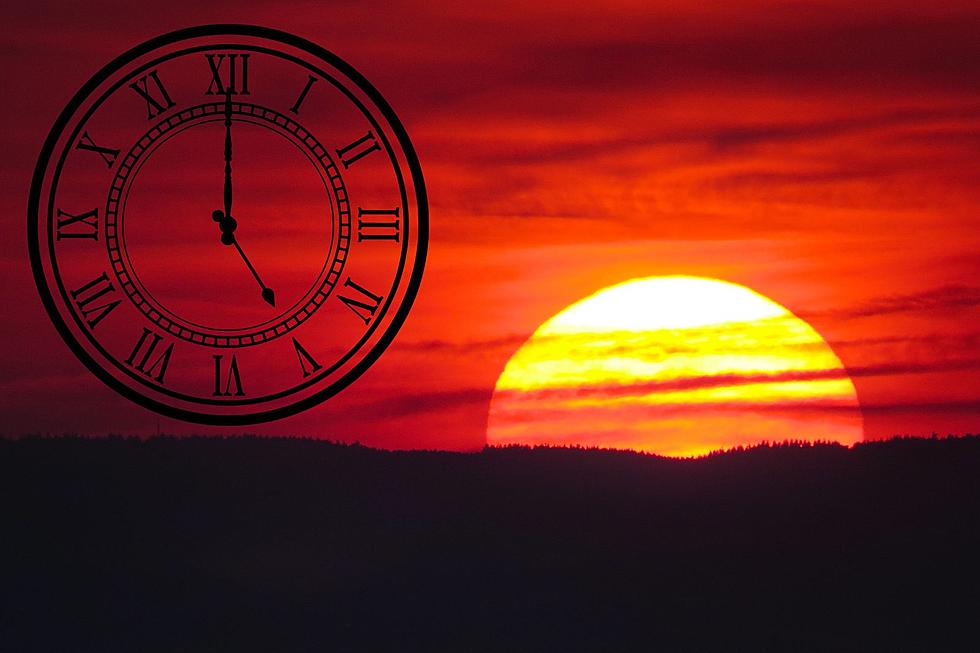
Why clocks in NJ should once again fall back in October or sooner
A topic that's been on fire lately when it comes to time. Should we keep falling back and springing forward, or pick one and leave it at that?
Throughout 2023, all the talk has been about eliminating standard time. In other words, let it remain at Daylight Standard Time all year long.
Although that might sound great on paper, it's not really practical. If anything, keeping us at standard time would make more sense then remaining at Daylight Saving, but that's an argument for another day.
At this moment in time, neither Daylight Saving nor Standard Time is going anywhere. And more likely than not, this will remain the case long into the future.
One thing that's always surprising to this day is the claim of how much we'd be saving on energy if it stayed brighter for an hour longer. Sure, maybe it helped in the past during World War II when it was known as War Time instead of Daylight Saving, but that's about it.
When it comes to the saving energy argument, that's been debunked a handful of times in the past. In fact, we tried this experiment once and it failed after the first year.
It was thanks to the 1973 oil embargo that the United States first tried Daylight Saving Time year-round. The country remained in Daylight Saving Time beginning in January 1974 and stayed that way through the following year.
But this proved to be very unpopular with the public and did little to save energy. Permanent Daylight Saving officially ended in April 1975. Standard Time would then return come fall.
From that point on up until 2007, Daylight Saving Time began the first weekend of April and ran through the last week of October. In 2007, that changed to begin the second weekend in March to the first weekend in November, which is where we are today.
So we've been up this road before where we tried this little experiment and it failed. So why should be go back and do it again?
It doesn't save energy, and it won't make you happier. Yes, it'll remain brighter at the end of the day, but at what cost?
We already put up with very dark mornings the last few weeks in October and in the beginning of November. It just makes starting the day more miserable, not to mention more dangerous on the dark roads.
So no, we're not going to shift to permanent Daylight Saving anytime soon. We may think we want it, but as we learned in the mid-1970s, it didn't work out the way we hoped.
But lets back up for a second and focus again on those dark mornings. Winter mornings are already dark under standard time. Imagine how much darker it would be under Daylight Saving.
The time of year we flip back to standard time is already too late. With how dark mornings get now, there's no reason why Daylight Saving Time should run through the beginning of November.
And no, we don't really like those super dark mornings. We need daylight to help start our days.
This is why we really should move the fall back to what it used to be. It simply isn't practical to keep Daylight Saving going into November in the Garden State.
In fact, maybe we should go back even further and change the clocks to Standard Time around the third weekend of October. It's usually around that point of the year the mornings start to get too dark in New Jersey under Daylight Saving Time anyway.
Regardless of which weekend the fall back occurs, going through November is just too long and it does nothing to save energy. Yes, this opinion might be unpopular, but it's more practical than keeping Daylight Saving Time year-round.
And as noted earlier, we tried Daylight Saving year-round as a nation once and didn't like it. So even though having that extra hour of light in the evening might sound nice, it's smarter and makes more sense to keep it in the mornings throughout the cooler months.
Travel back in time to a colorized Atlantic City circa 1919
Windfarm projects proposed for NJ coast — and what they might look like
The post above reflects the thoughts and observations of New Jersey 101.5 Sunday morning host Mike Brant. Any opinions expressed are his own.




